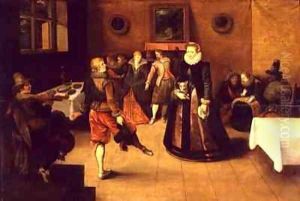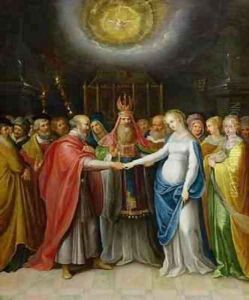Ambrosius II Francken or Franck Paintings
Ambrosius II Francken or Franck was a notable figure in the Flemish art scene during the late 16th and early 17th centuries. Born in 1581 in Antwerp, then one of the most vibrant artistic centers of the Spanish Netherlands, he was part of the renowned Francken family, a dynasty of painters that played a significant role in the development of Flemish art. His father, Frans Francken I, and his brothers, Hieronymus and Frans II, were also distinguished painters, making the Francken household a veritable incubator of artistic talent.
Ambrosius II's work is emblematic of the transition between the late Mannerist style and the early Baroque. While his early works exhibit the complex compositions, elongated figures, and somewhat artificial poses characteristic of Mannerism, his later paintings reflect the influence of the Baroque movement, with a greater emphasis on realism, emotion, and the use of chiaroscuro to achieve dramatic effects. Despite living in the shadow of his more famous brother, Frans II, Ambrosius II developed his own unique style, particularly in his religious compositions and altar pieces, which were highly regarded for their devotion and intensity.
Throughout his career, Ambrosius II remained active in the Antwerp Guild of Saint Luke, an association of painters, engravers, and other artists. His membership in the guild, from his acceptance as a master in 1605 until his death in 1632, was a testament to his standing in the artistic community of Antwerp. Ambrosius II Francken's contributions to Flemish art are remembered for their depth of emotion and technical skill, bridging the gap between the artistic traditions of the Renaissance and the innovations of the Baroque period. His legacy, though perhaps not as widely recognized as that of some of his contemporaries, remains an important chapter in the history of Flemish painting.

